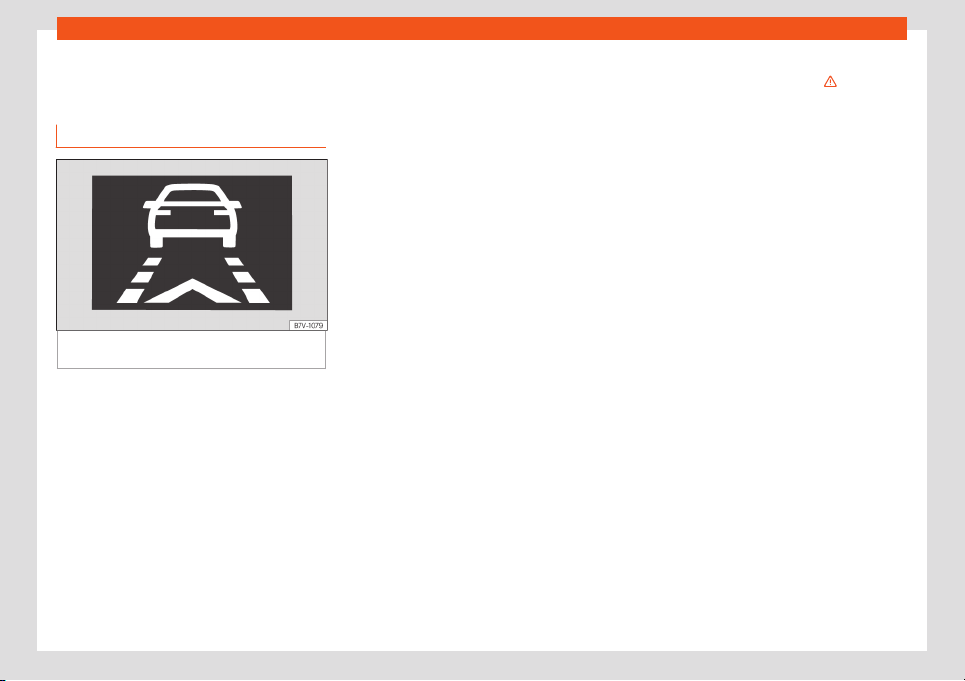Loading ...
Loading ...
Loading ...

Driver assistance systems
Emergency braking assis-
t
ance syst
em (Fr
ont Assist)*
Topic introduction
Fig. 258
On the instrument panel display: ad-
v
ance w
arning indications.
The objective of the emergency braking as-
sist
ance syst
em is t
o prevent head-on colli-
sions against objects that may be in the vehi-
cle’s path or minimise the consequences of
such impacts.
Within the limitations imposed by the environ-
mental conditions and by the system itself,
the function acts in staggered fashion, de-
pending on how critical the situation is. Initial-
ly it warns the driver, and if the driver’s reac-
tion does not occur or is insufficient, it acti-
vates an independent emergency braking.
The function is intended to prevent collisions
with parked vehicles or vehicles in the same
lane travelling in the same direction. It may
fail to activate in other danger situations.
The Front Assist function is active within a
range of speeds between 4 km/h (2.5 mph)
and 210 km/h (130 mph). Depending on
speed, traffic conditions and driver behaviour,
some of the sub-functions described below
are omitted in order to optimise the system’s
general behaviour.
The Front Assist is a driving assistance
function that can never replace the driv-
er’s attention.
Safety distance warning
If the system detects a situation of danger
because the vehicle is too close to the vehicle
ahead, it will warn the driver by means of an
indication on the instrument panel display
.
The timing of the warning varies depending
on driver behaviour and the traffic situation.
Advance warning
If the system detects a possible collision with
the vehicle in front, it may alert the driver by
means of an audible warning and an indica-
tion on the instrument panel display
›››
Fig. 258.
The warning moment varies depending on
the traffic situation and driver behaviour. At
the same time, the vehicle will prepare for a
possible emergency braking
›››
.
Critical w
arning
If the driv
er f
ails to react to the pre-warning
(advance warning), the system may actively
intervene in the brakes and generate a brief
jolt to warn the driver of the imminent danger
of a collision.
Automatic braking
If the driver also fails to react to the critical
warning, the system may initiate independent
emergency braking by progressively increas-
ing the braking effect in accordance with how
critical the situation is.
Driver emergency braking assistance sys-
tem
Faced with an imminent collision, the system
may detect that the driver is not braking hard
enough to avoid the collision. In this case, it
will automatically increase the braking effect.
Due to certain driving circumstances and the
limitations of its operation, there are some
cases in which the system cannot prevent a
collision, although it can significantly mini-
mise the consequences by reducing the
speed and the force of the impact.
»
275
Loading ...
Loading ...
Loading ...